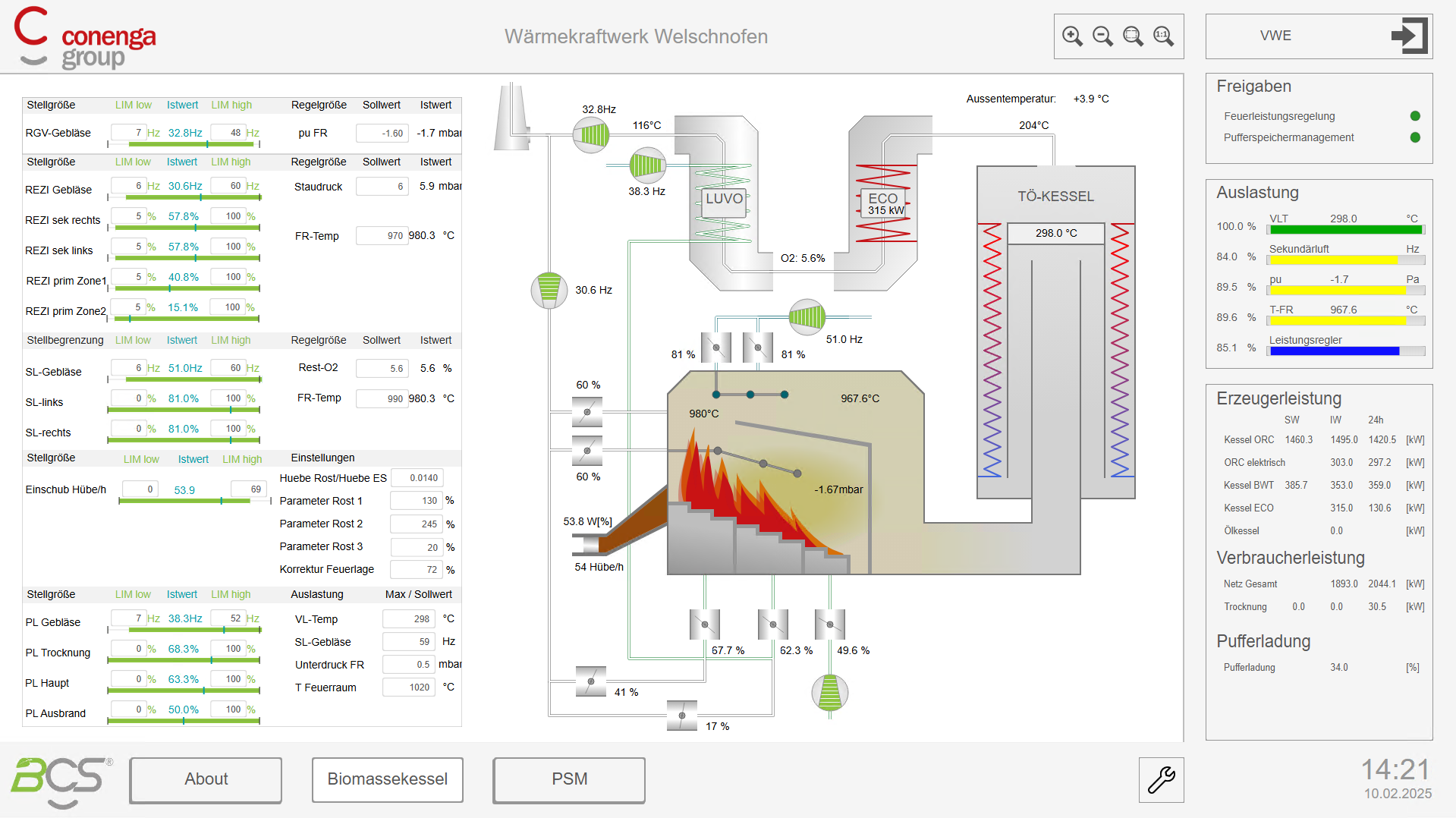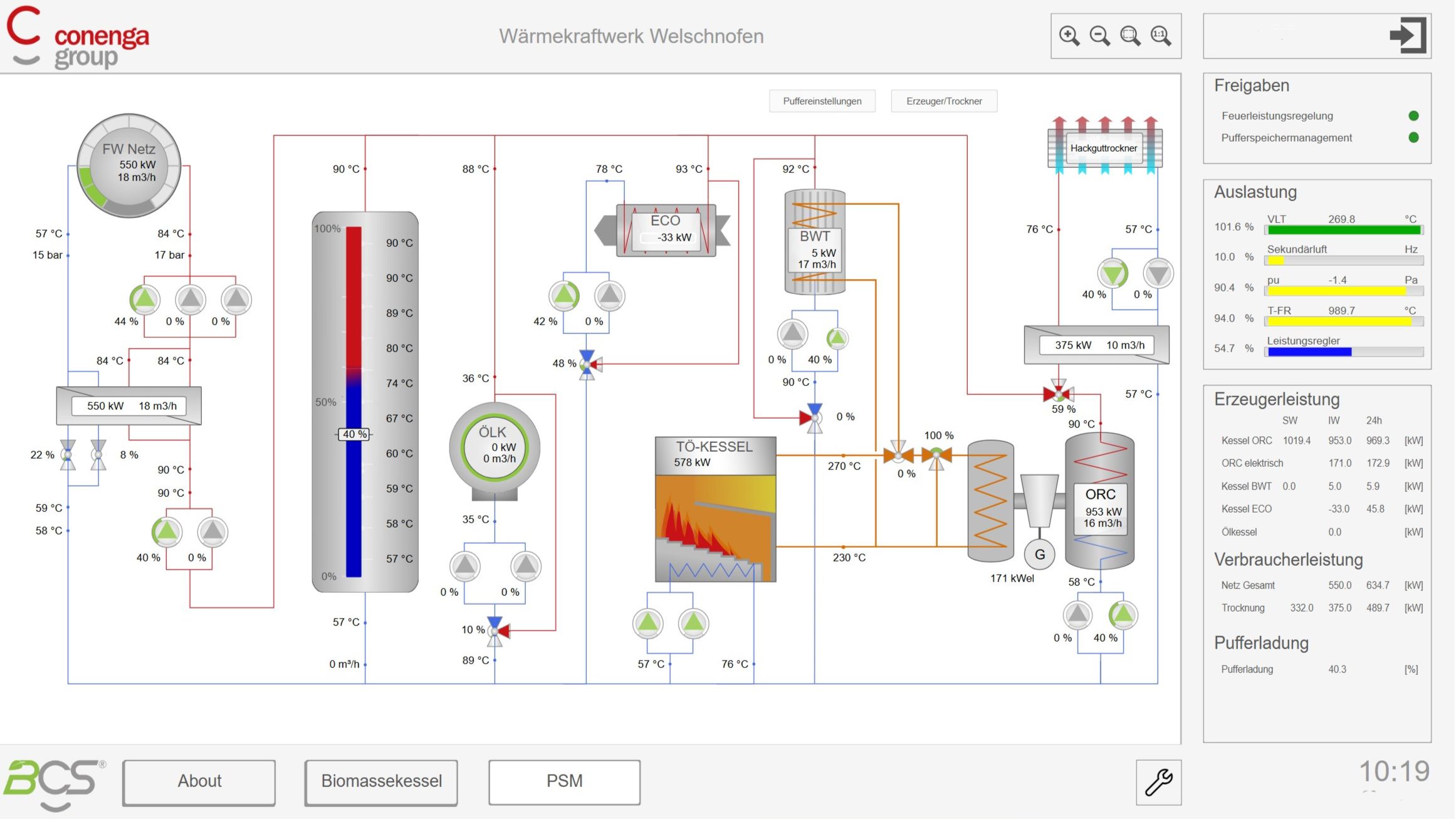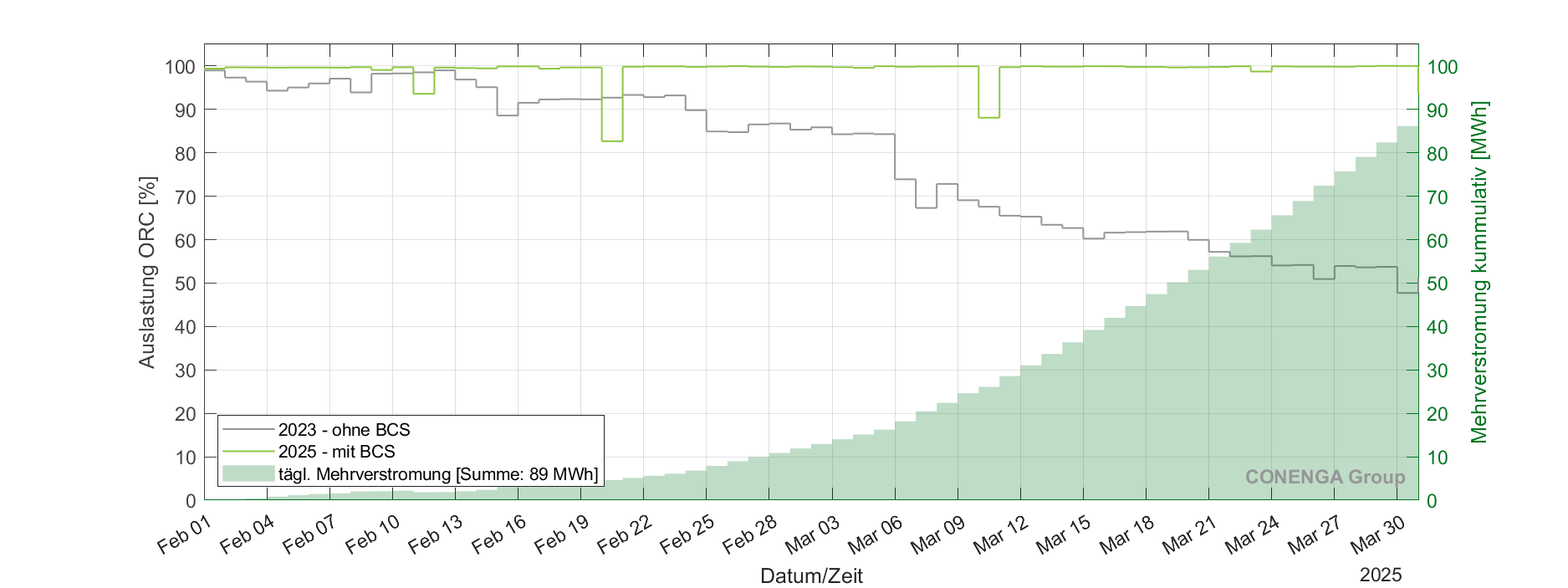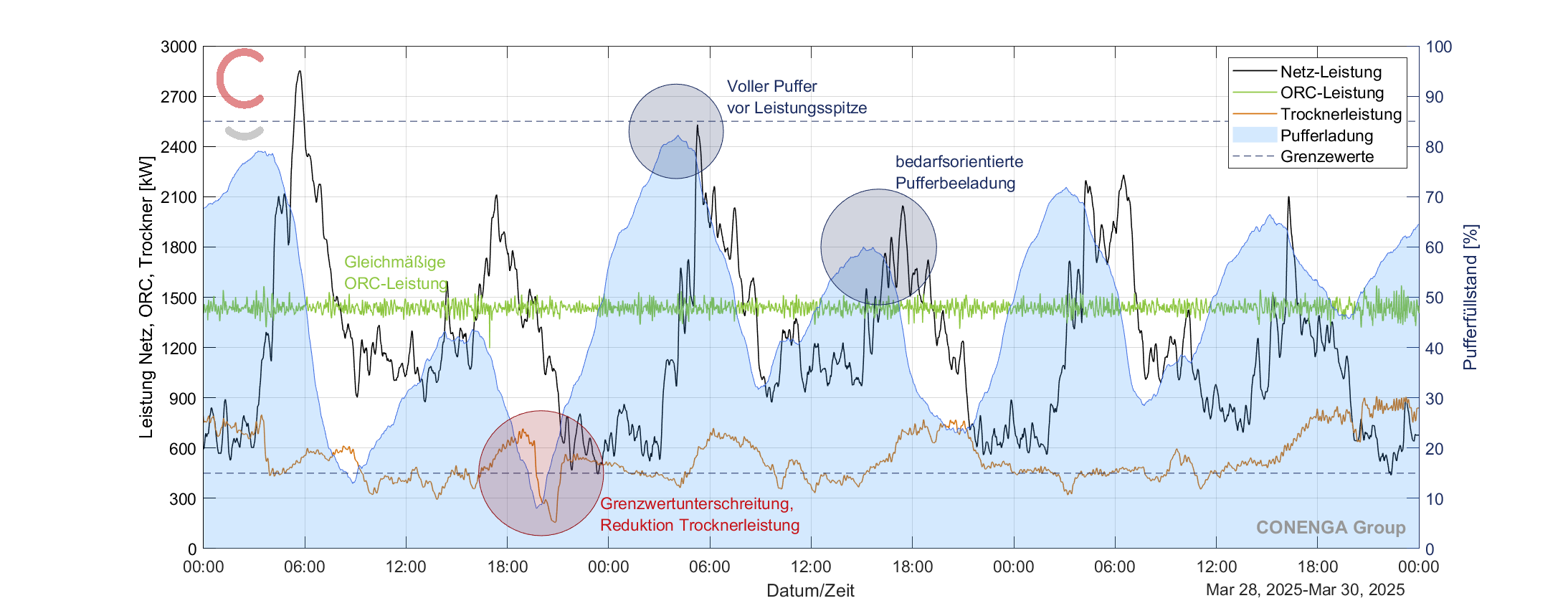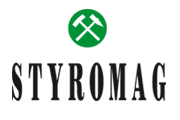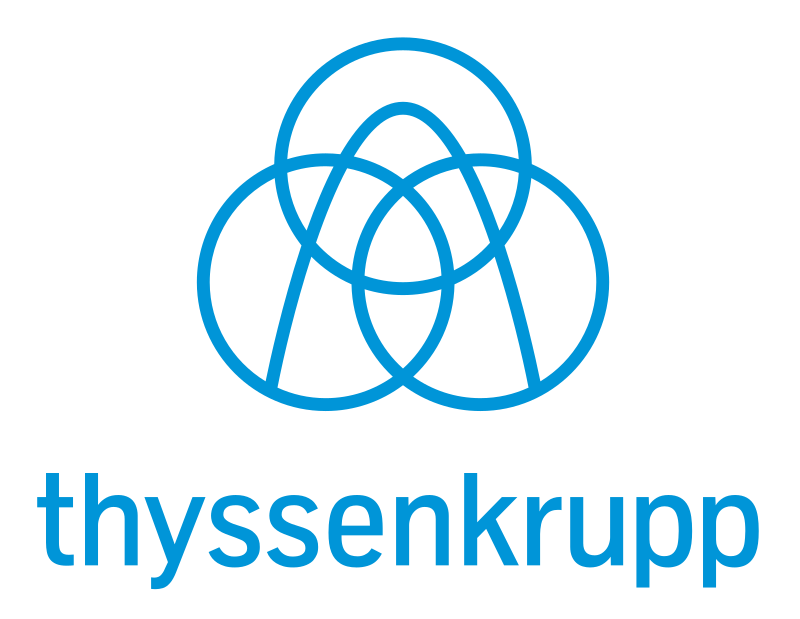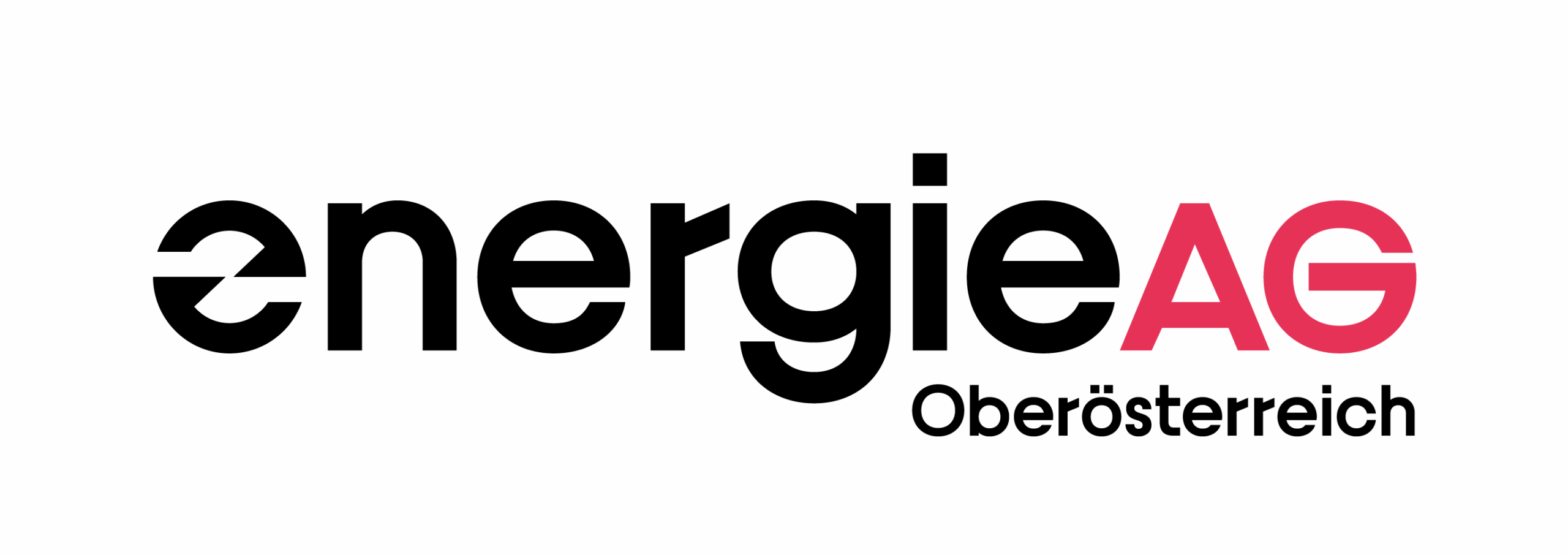Implementation of a BCS®
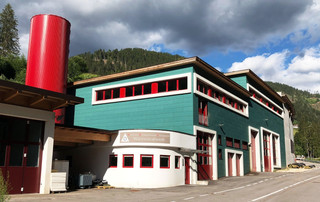
firing rate control (FLR) and a BCS® buffer storage management (PSM) including the control of all water-side units
The challenge
- Oscillating and unstable operation of the system at high output
- Frequent system failures
- Constant manual intervention is necessary, especially in winter
- Overall low ORC utilization
- No automatic load specification for the heat generators
- Operator must set suitable operating mode himself and adapt it daily to the conditions in the district heating network
Objective
- Uniform boiler output and avoidance of load drops.
- Increased automation with reduced manual intervention.
- Optimization of fuel flexibility and stabilization of steam management.
- Compliance with emission limits for CO and NOx.
- Increased efficiency by reducing gas consumption, caking and cleaning downtimes.
Implementation
- Signal switching with Modbus TCP, connection with Siemens T3000. Technical specifications from us, programmer from Siemens
- FLR module: Quantity control of flue gas quantities, use of water content calculation for fire position correction and rezi quantities in the primary zone
- PSM/LHM module: Thermal oil boiler with ORC module and operating heat exchanger, economizer, fuel drying as controllable heat sink Control of all relevant water-side units including pump changeovers
Results
- Increase in the ORC turbine’s power generation efficiency from approx. 93% to >99
- Additional yield from ORC power generation > € 50.000,-/a
- Automatic and trouble-free operation of the entire system in various load ranges
- Reduction in manual interventions from >20 h/week to < 1 h/week
- Combustion homogenization with constant target values in the furnace
- Continuous full-load operation of the entire system at the performance limit
- Automatic load specification to the boiler
- Compliance with buffer loading limits
- Fully automatic operation of the entire system, even with changing power consumption in the grid
- Consistent utilization of the ORC system
- Compensation of required load changes through controllable fuel drying



